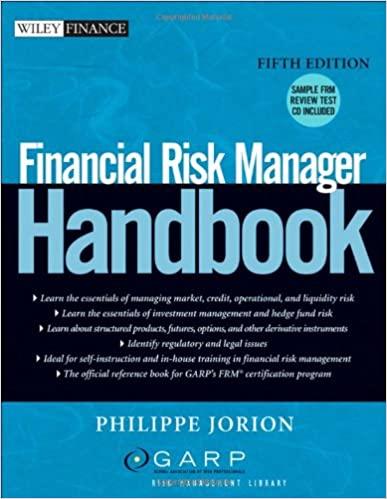| eBook Problem 15-09 The treasurer of a middle market, import-export company has approached you for advice on how to best invest some of the firms short-term cash balances. The company, which has been a client of the bank that employs you for a few years, has $270,000 that it is able to commit for a one-year holding period. The treasurer is currently considering two alternatives: (1) invest all the funds in a one-year U.S. Treasury bill offering a bond equivalent yield of 4.15%, and (2) invest all the funds in a Swiss government security over the same horizon, locking in the spot and forward currency exchanges in the FX market. A quick call to the banks FX desk gives you the following two-way currency exchange quotes. | | Swiss Francs per | U.S. Dollar per | | | U.S. Dollar | Swiss Franc (CHF) | | Spot | 1.5487 | | 0.6457 | | | 1-year CHF futures | | | 0.6381 | | - Calculate the one-year bond equivalent yield for the Swiss government security that would support the interest rate parity condition. Do not round intermediate calculations. Round your answer to two decimal places.
% - Assuming the actual yield on a one-year Swiss government bond is 5.70%, which strategy would leave the treasurer with the greatest return after one year? Do not round intermediate calculations. Round your answer to two decimal places.
The one-year bond equivalent yield for the U.S. Treasury bill is %. So, investing in a one-year -Select-Swiss government securityU.S. Treasury billItem 3 is more profitable than investing in -Select-Swiss government securityU.S. Treasury billItem 4 . - Describe the transactions that an arbitrageur could use to take advantage of this apparent mispricing.
- An arbitrageur could borrow $270,000 domestically at 4.15%, convert it into CHF, buy Swiss government bonds, and enter into a forward contract to reconvert the proceeds after a year. After a year the sum invested in Swiss government bonds at 5.70% could be converted back into dollars at the forward rate of 0.6381 $/CHF. Then the arbitrageur should repay the loan plus interest. So, net profit could be collected.
- An arbitrageur could borrow 418,000 CHF in Switzerland at 5.70%, convert it into dollars, buy U.S. Treasury bills, and enter into a forward contract to reconvert the proceeds after a year. After a year the sum invested in U.S. Treasury bills at 4.15% could be converted back into CHF at the forward rate of 1.5672 CHF/$. Then the arbitrageur should repay the loan plus interest. So, net profit could be collected.
- An arbitrageur could borrow $270,000 domestically at 4.15%, convert it into CHF, buy Swiss government bonds, and enter into a forward contract to reconvert the proceeds after a year. After a year the sum invested in Swiss government bonds at 5.29% could be converted back into dollars at the forward rate of 0.6381 $/CHF. Then the arbitrageur should repay the loan plus interest. So, net profit could be collected.
- An arbitrageur could borrow 418,000 CHF in Switzerland at 5.70%, convert it into dollars, buy U.S. Treasury bills, and enter into a forward contract to reconvert the proceeds after a year. After a year the sum invested in U.S. Treasury bills at 4.36% could be converted back into CHF at the forward rate of 1.5672 CHF/$. Then the arbitrageur should repay the loan plus interest. So, net profit could be collected.
-Select-IIIIIIIVItem 5 Calculate what the profit would be for a $270,000 transaction. Do not round intermediate calculations. Round your answer to the nearest cent. Use only the exchange rates provided in the table above (in the problem statement) for your calculations. $ |






